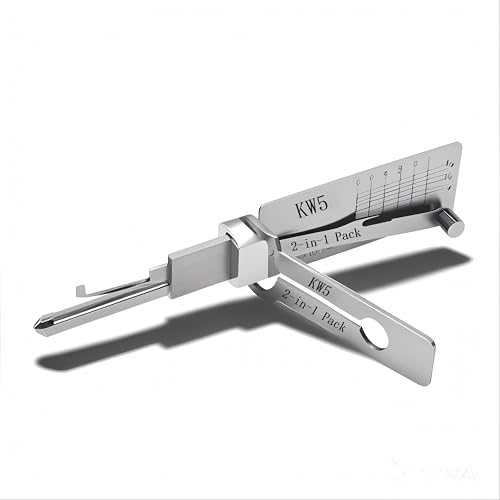Ever struggled with pants that are just a tad too long? I know the feeling, and hemming your own pants by hand can be a simple and satisfying solution. It’s easier than you might think and lets you tailor your favorite pairs perfectly to your style.
Tools You’ll Need
Hemming pants by hand requires specific tools to ensure a neat and accurate finish. Gathering the right supplies beforehand streamlines the process.
Essential Sewing Supplies
- Needles: Use sharp, medium-sized hand sewing needles for durability and ease of use.
- Thread: Select polyester or cotton thread that matches the fabric color for a seamless look.
- Scissors: Employ a pair of fabric scissors to achieve clean, precise cuts.
- Measuring Tape: Utilize a flexible measuring tape to determine the desired hem length accurately.
- Pins: Apply stainless steel pins to hold the fabric in place while sewing.
- Iron: Use a heated iron to press the hem and create crisp, sharp lines.
Optional Tools for Precision
- Tailor’s Chalk: Mark hem lines with tailor’s chalk for clear, removable guidelines.
- Seam Ripper: Correct mistakes effortlessly with a sharp seam ripper.
- Hem Gauge: Measure and mark hems consistently using a specialized hem gauge tool.
- Clapper or Pressing Form: Shape and press the hem accurately with a clapper or pressing form.
- Magnifying Glass: Enhance visibility when working with intricate or fine fabrics using a magnifying glass.
Preparing Your Pants
Proper preparation ensures a neat hem. I follow these steps to get my pants ready.
Measuring the Desired Length
Accurate measurement defines the hem. I lay the pants on a flat surface and determine the new length.
- Measure from the crotch to the desired hemline using a measuring tape.
- Double-check measurements for both legs to ensure consistency.
- Record the length to maintain accuracy throughout the process.
| Side | Original Length | Desired Length | Adjustment |
|---|---|---|---|
| Left | 40 inches | 38 inches | -2 inches |
| Right | 40 inches | 38 inches | -2 inches |
Marking and Folding the Hem
Precise marking and folding set the foundation for stitching. I mark the hem accurately before folding.
- Use tailor’s chalk to mark the new hemline evenly.
- Fold the fabric to the marked line, ensuring both legs are identical.
- Secure the folded hem with stainless steel pins to maintain the fold.
Sewing the Hem by Hand
With the hem folded and pinned, it’s time to sew it securely. This step ensures your pants maintain the desired length and look professionally finished.
Choosing the Right Stitch
Selecting the appropriate stitch guarantees durability and a clean appearance. I typically use the following stitches for hemming:
- Running Stitch: Simple and quick, ideal for light to medium-weight fabrics.
- Backstitch: Strong and secure, perfect for heavy or frequently worn pants.
- Blind Hem Stitch: Nearly invisible on the outside, suitable for a polished finish on dress pants.
Consider the fabric type and the pants’ usage when choosing your stitch. For example, denim pants benefit from backstitching, while cotton trousers look best with a blind hem.
Step-by-Step Sewing Process
Follow these steps to sew the hem accurately:
- Thread the Needle: Use matching thread, knotting one end securely.
- Start Stitching: From the inside, insert the needle about 1/4 inch from the folded edge.
- Choose Your Stitch: Depending on your selection, make consistent running, backstitch, or blind hem stitches.
- Maintain Even Tension: Ensure stitches are evenly spaced to avoid puckering.
- Sew Both Legs: Repeat the process for the other pant leg, ensuring symmetry.
- Secure the Stitch: Finish with a small knot on the inside to prevent unraveling.
- Press the Hem: Use an iron to flatten the hem, enhancing the professional look.
By following these steps, I achieve a neat and lasting hem that complements my pants perfectly.
Finishing Touches
After sewing the hem, I ensure every detail is perfect. These final steps guarantee a professional and polished look.
Securing the Thread Ends
I begin by tying a secure knot to prevent the stitches from unraveling. First, I insert the needle into the fabric a few times, creating a small loop. Next, I pull the thread tightly and tie a double knot close to the fabric. If there’s excess thread, I trim it carefully with fabric scissors to maintain a clean appearance.
Pressing the Hem for a Neat Look
Using an iron, I press the hem to set the stitches and smooth out any wrinkles. I start by turning the pants right side out, ensuring the hem lies flat. Then, I apply medium heat with steam if needed, running the iron evenly along the hemline. This step not only enhances the overall appearance but also reinforces the fold, making the hem more durable.
Tips for a Professional Finish
Achieving a professional hem requires attention to detail and precision. Here are key tips to ensure your pants look polished:

Choose the Right Thread
- Match Thread Color: Select a thread that blends seamlessly with your pants fabric to create an invisible stitch.
- Use Quality Thread: Invest in strong, durable thread to prevent future fraying and ensure longevity.
Maintain Even Stitching
- Consistent Stitch Length: Keep your stitches uniform to enhance the hem’s appearance and strength.
- Use Appropriate Stitch Type: Opt for a backstitch for durability or a blind hem stitch for a subtle look, depending on fabric weight.
Press Thoroughly
- Iron the Hem: After sewing, press the hem with a warm iron to set the stitches and eliminate wrinkles.
- Use Steam: Steam helps relax the fabric fibers, resulting in a smoother finish.
Ensure Symmetry
- Double-Check Measurements: Verify both legs are identical in length before sewing to maintain balance.
- Align Hemlines: Ensure the folded hems are even and aligned to prevent uneven fringes.
Secure Thread Ends
- Tie Strong Knots: Finish with double knots to secure the thread and avoid unraveling.
- Trim Excess Thread: Cut any loose threads close to the knot for a clean look.
Handle Different Fabrics Appropriately
- Adjust Stitching Technique: Use finer stitches for delicate fabrics like silk and stronger stitches for heavier materials like denim.
- Test on Scrap Fabric: Practice your technique on a fabric scrap to determine the best approach for your specific material.
Use Additional Tools for Precision
- Tailor’s Clapper: Helps keep the hem flat and pressed while sewing.
- Magnifying Glass: Assists in maintaining stitch accuracy on intricate or dark fabrics.
Implementing these tips will elevate your hemming skills, ensuring your pants feature a neat and professional finish every time.
Conclusion
Hem your pants feels incredibly rewarding knowing you can make your favorite pairs fit just right. It’s a simple skill that saves time and money while giving you the freedom to customize your wardrobe.
I love how easy it was to achieve a neat finish and the confidence of wearing pants tailored by my own hands. Give it a try and enjoy the satisfaction of a job well done.

















